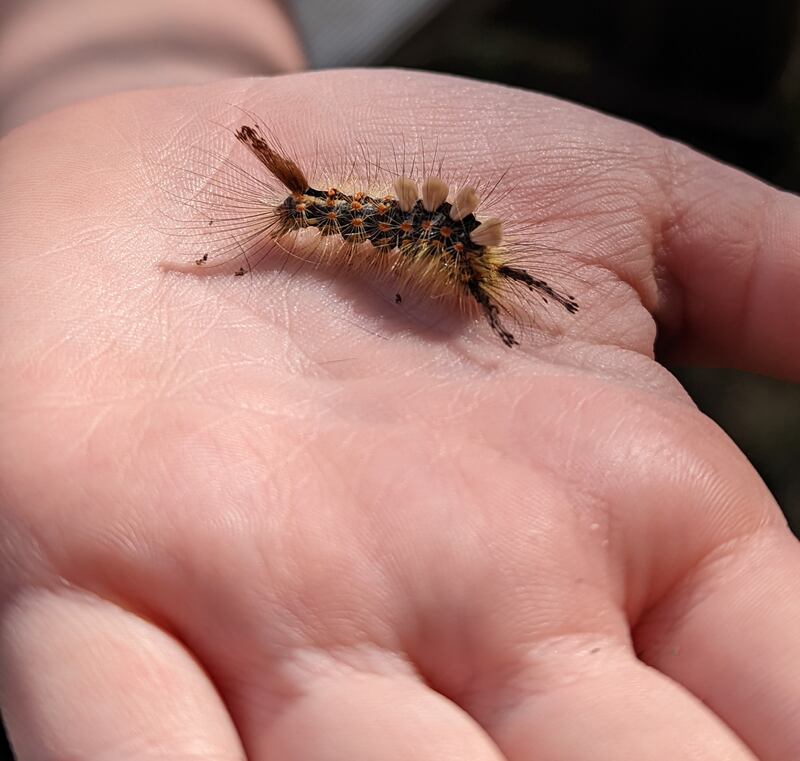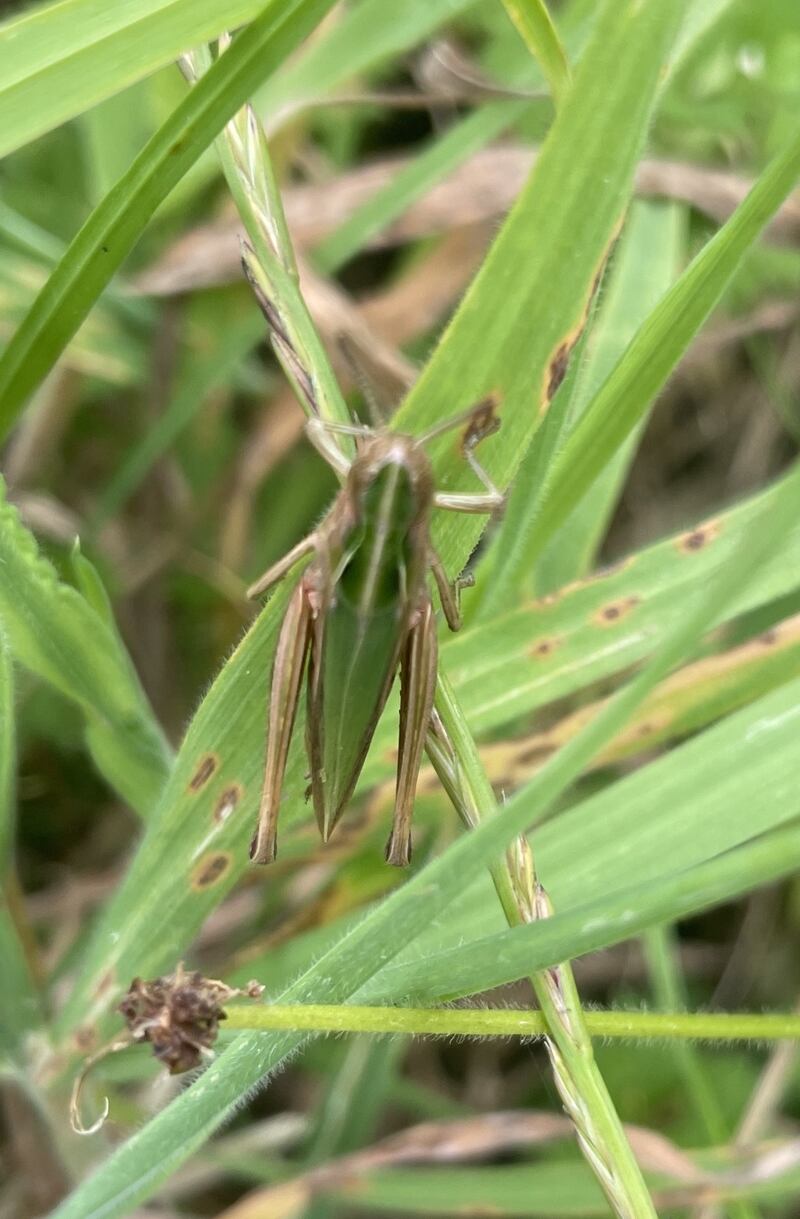While out with Cork Whale Watch, we spotted two orcas (killer whales), a species that hadn’t been seen in four years off the west Cork coast. We were so lucky to follow these for an hour or so. Tony Twamley, Co Cork
You really were lucky. Sightings are theoretically possible all around our coast and there was a sighting off Co Down and two off Co Kerry earlier this year.

I found this tiny, beautiful plant in my garden. It is virtually invisible until it flowers. The internet tells me that it is purple-leaved yellow sorrel. Is it okay to include it in a salad? Paul Brennan, Co Louth
It is the purple-leaved yellow-sorrel if its leaves are bronze, as some appear to be in your photo. If all the leaves were green, it would be the procumbent yellow-sorrel. They are both garden escapes. If you eat too many of the leaves you will get a big pain as they contain oxalic acid, which is not good for us in large quantities.
RM Block

While picking blackcurrants, I found this caterpillar on the branch. Can you tell me what it is? Caitlin Collins, Co Wexford
It is the caterpillar of the vapourer moth, which has irritant hairs, so it really shouldn’t be handled. It feeds on lots of woody plants as well as blackcurrants. The adult females are small, grey-brown and flightless. They wait on the cocoon they have emerged from for the flying orange-brown males to come courting.

This picture of a grasshopper was taken at Ballymulqueeny, Ennis. Brigid Barron
It is the common green grasshopper, the most abundant of our five grasshopper species. The adults will be gone by October. It overwinters as eggs in a pod in the soil.

I found this little moth. What is it? Emily O’Byrne, Co Meath
It is an August thorn, one of at least five species of thorn moths that occur here. Despite its name, it is on the wing until the end of September. The caterpillars feed at night on the leaves of beech, oak, birch and lime as well as on blackthorn and hawthorn.
Have you a nature query, observation, or photo you would like t share with The Irish Times? Submit it, with a location, via our website www.irishtimes.com/eyeonnature



















